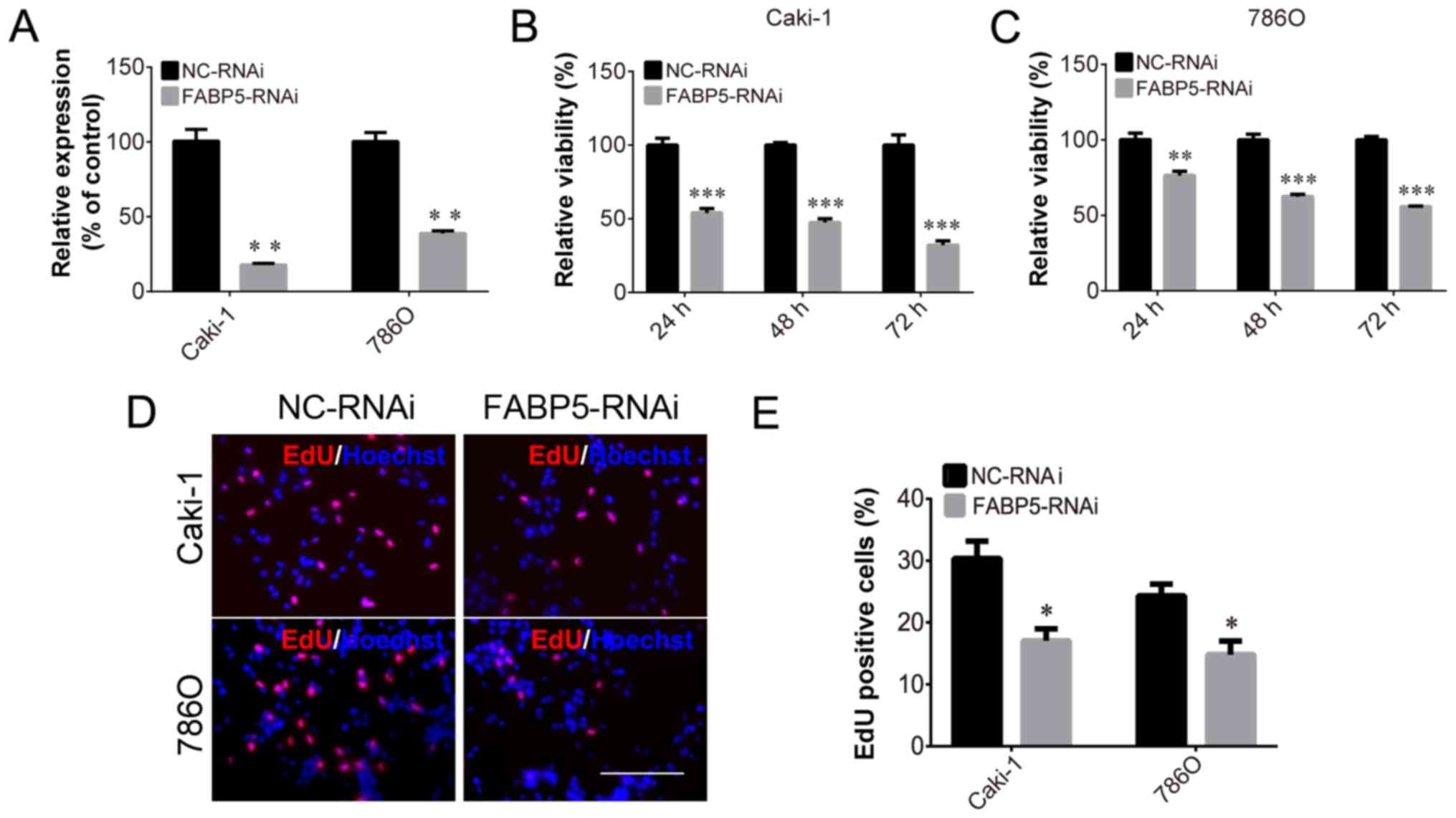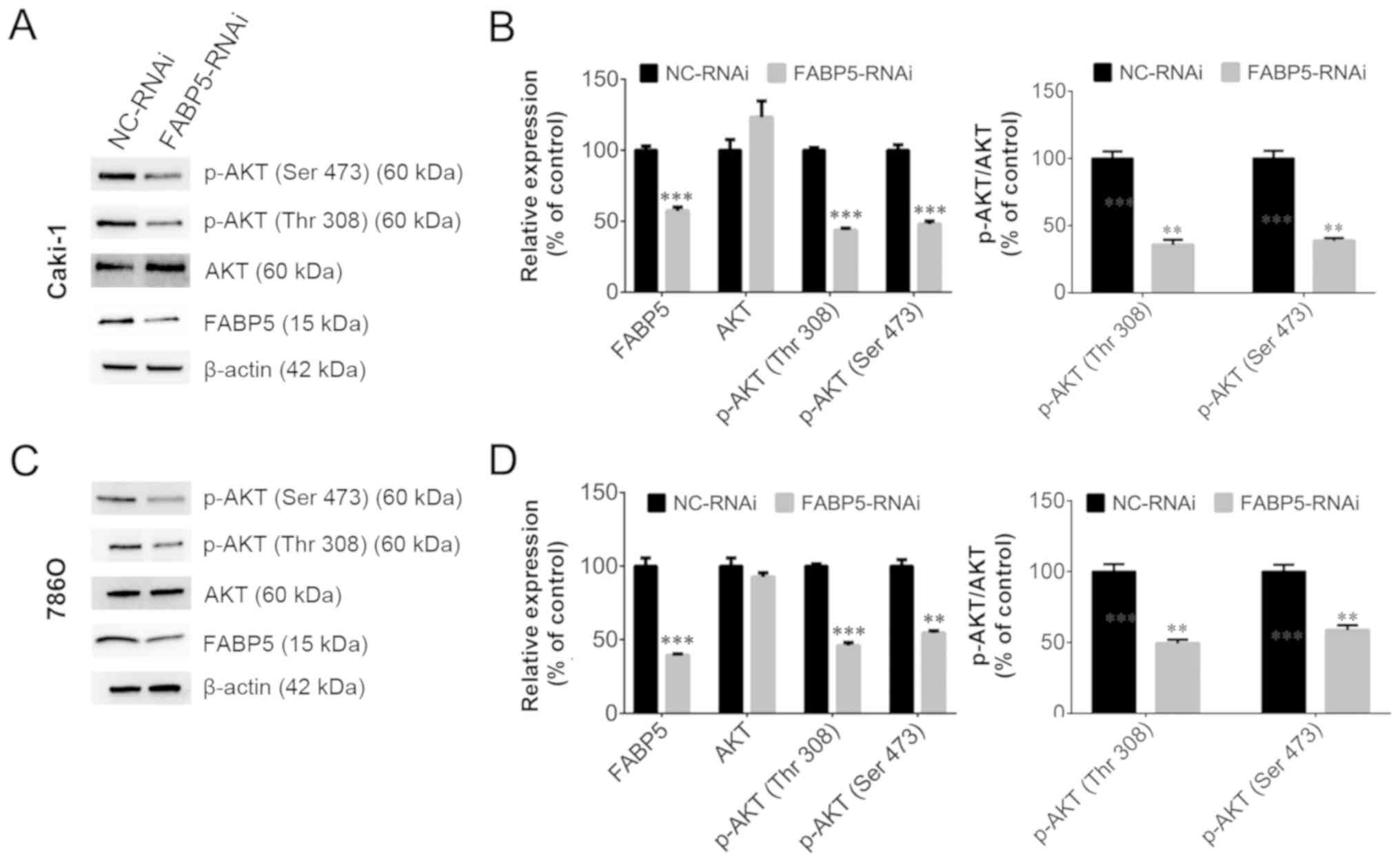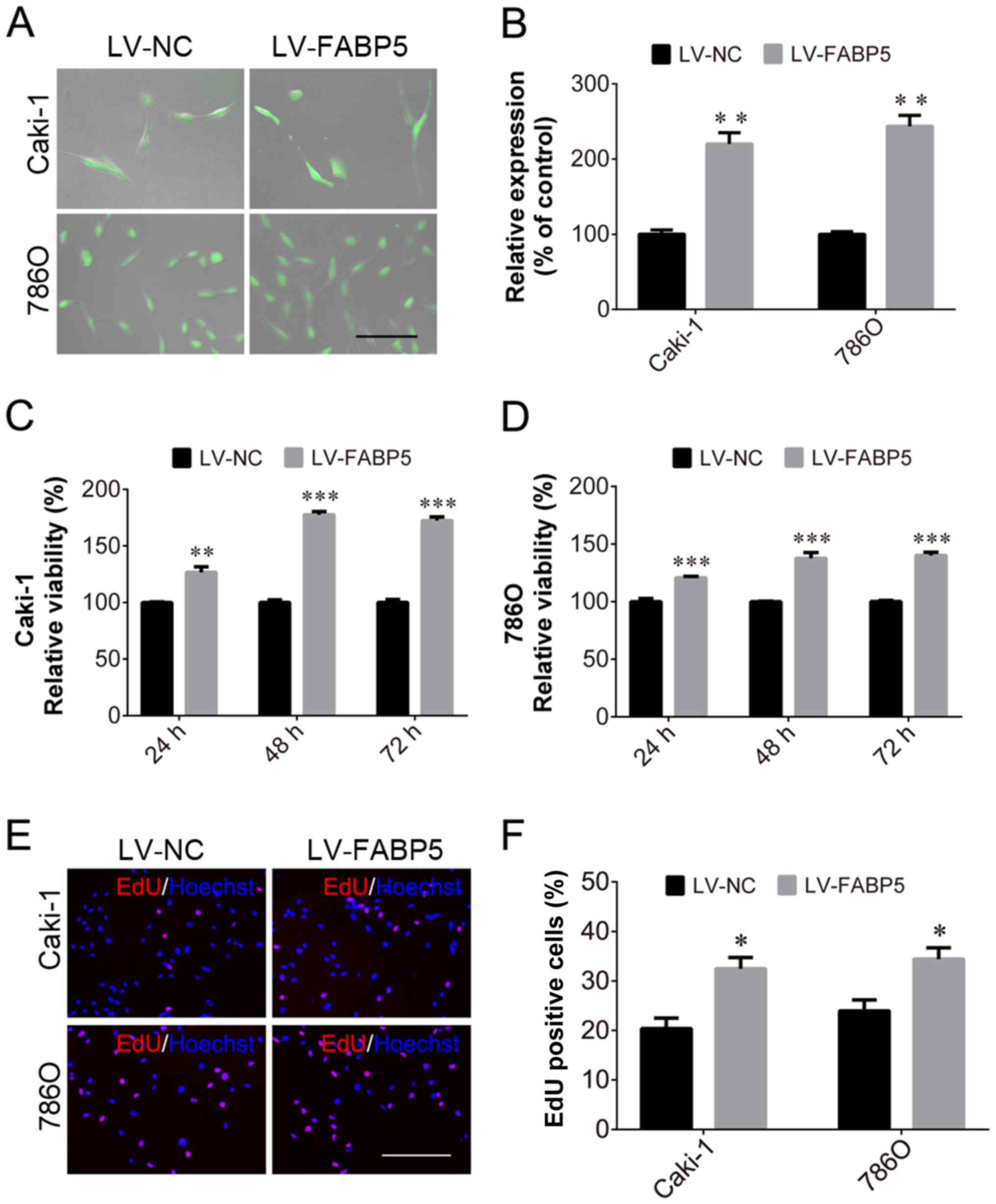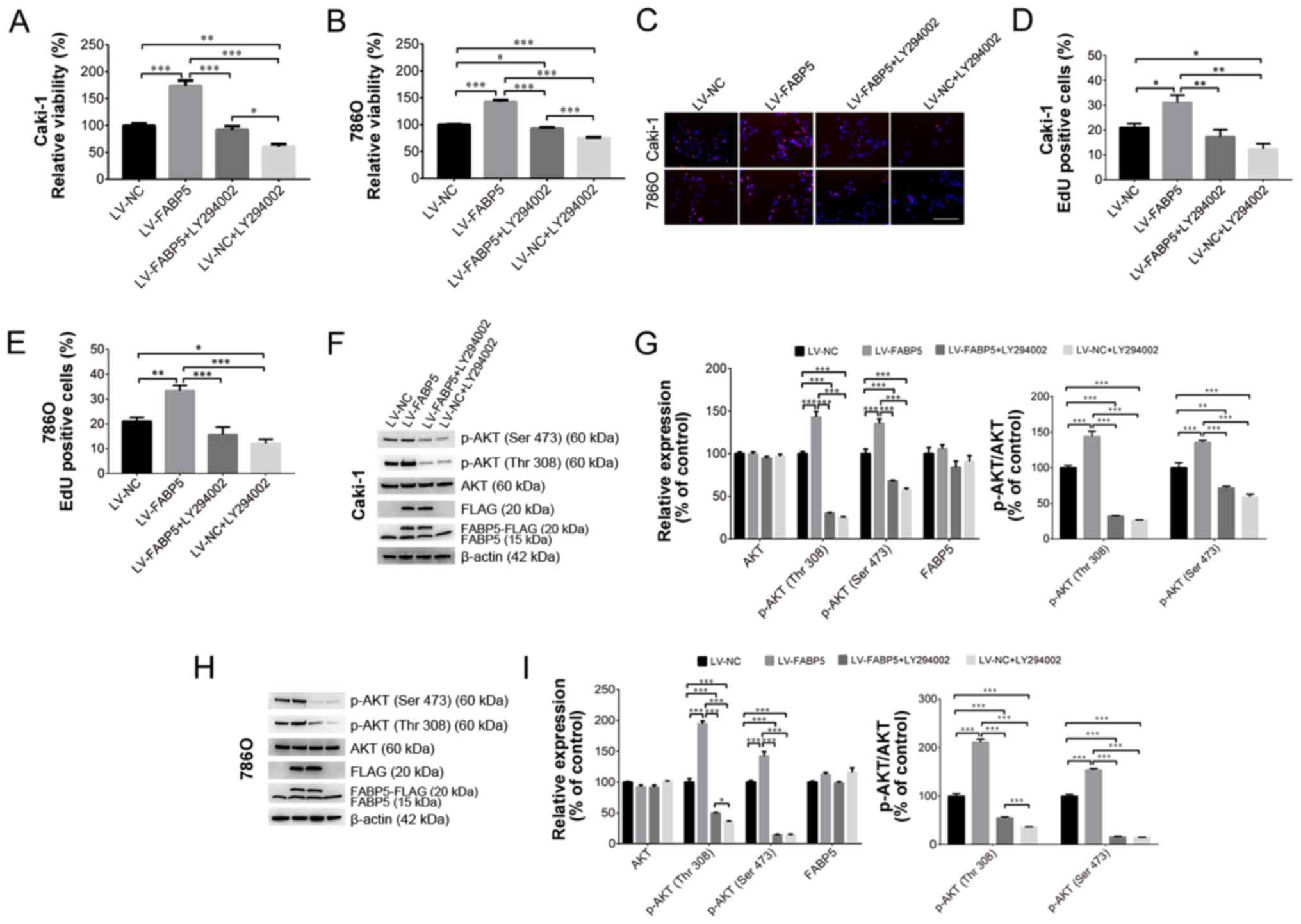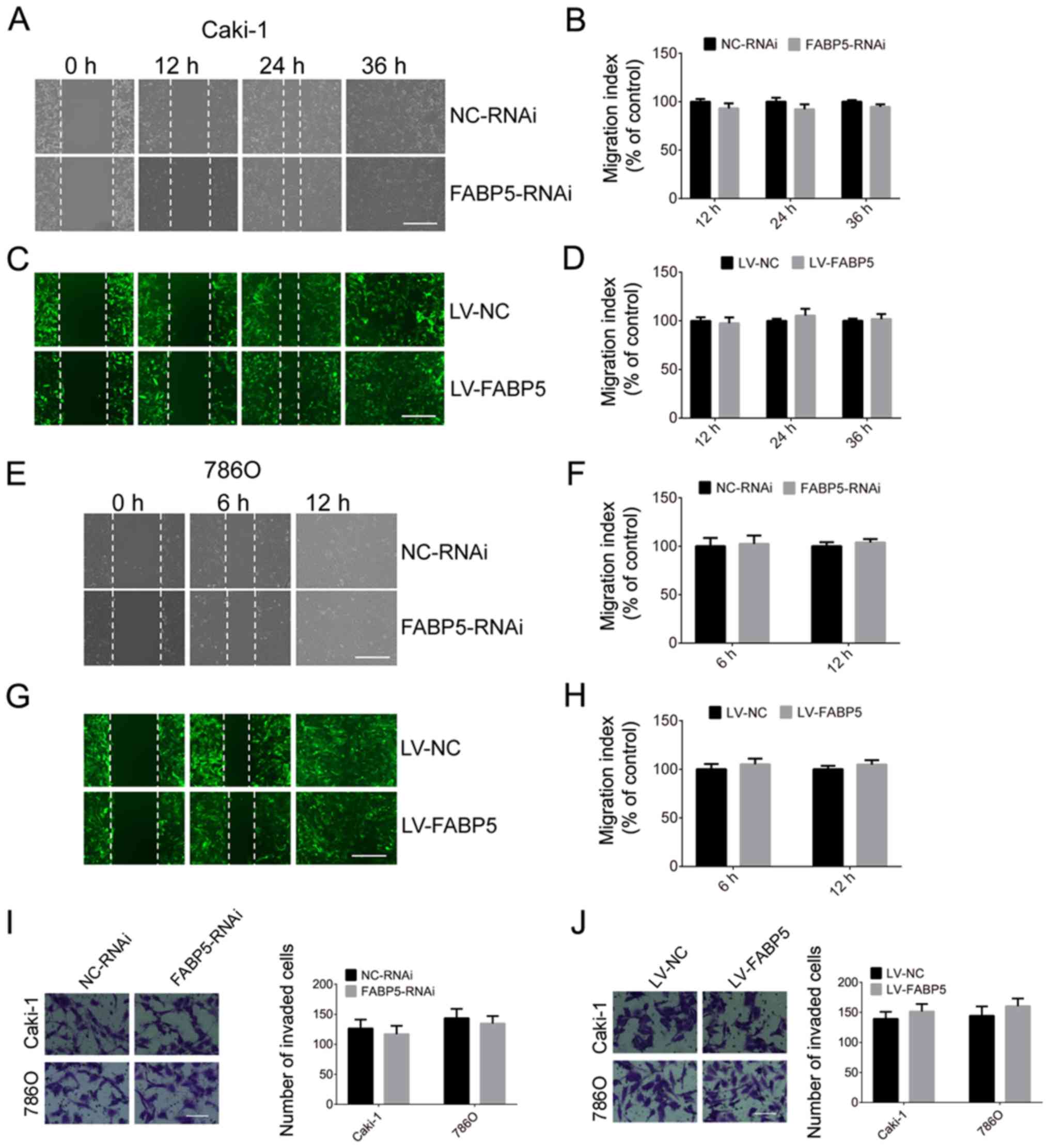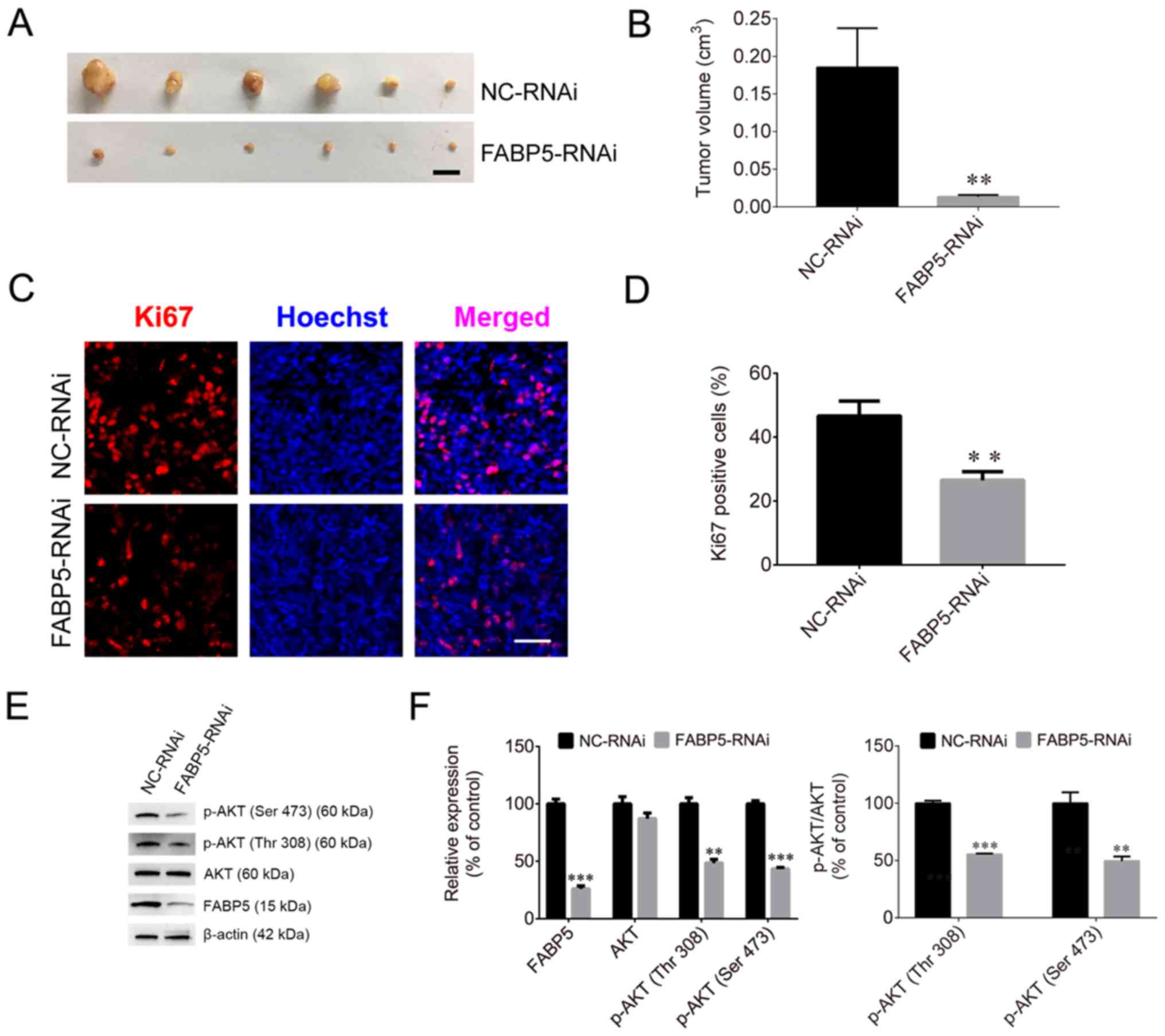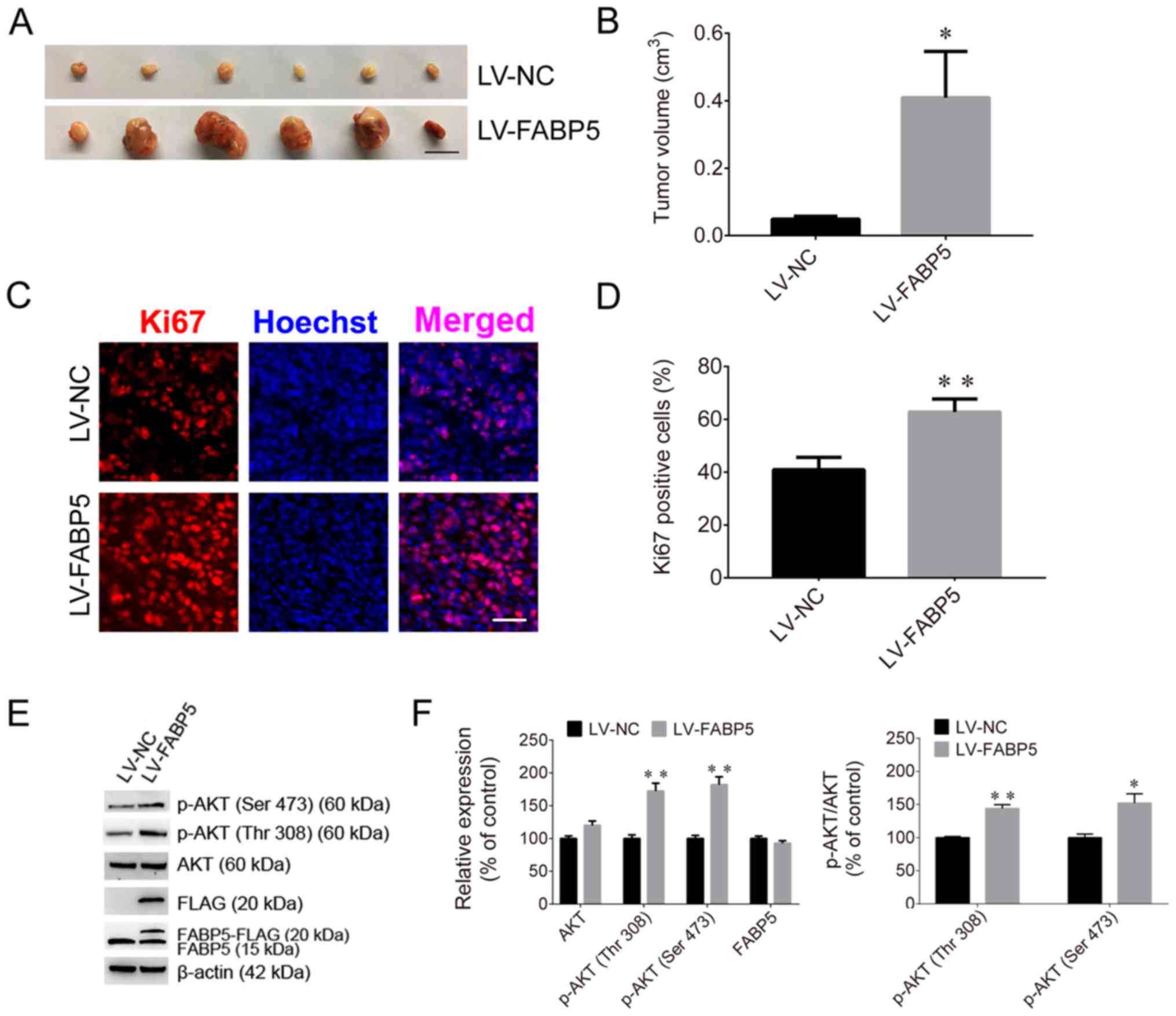|
1
|
Volpe A and Patard JJ: Prognostic factors
in renal cell carcinoma. World J Urol. 28:319–327. 2010. View Article : Google Scholar : PubMed/NCBI
|
|
2
|
Wood LS: Renal cell carcinoma: Screening,
diagnosis, and prognosis. Clin J Oncol Nurs. 13:3–7. 2009.
View Article : Google Scholar : PubMed/NCBI
|
|
3
|
Cheville JC, Lohse CM, Zincke H, Weaver AL
and Blute ML: Comparisons of outcome and prognostic features among
histologic subtypes of renal cell carcinoma. Am J Surg Pathol.
27:612–624. 2003. View Article : Google Scholar : PubMed/NCBI
|
|
4
|
Levy DA, Slaton JW, Swanson DA and Dinney
CP: Stage specific guidelines for surveillance after radical
nephrectomy for local renal cell carcinoma. J Urol. 159:1163–1167.
1998. View Article : Google Scholar : PubMed/NCBI
|
|
5
|
Figlin RA: Renal cell carcinoma:
Management of advanced disease. J Urol. 161:381–386; discussion
386–387 1999. PubMed/NCBI
|
|
6
|
Zhong C, Chen Y, Tao B, Peng L, Peng T,
Yang X, Xia X and Chen L: LIM and SH3 protein 1 regulates cell
growth and chemosensitivity of human glioblastoma via the PI3K/AKT
pathway. BMC Cancer. 18:7222018. View Article : Google Scholar : PubMed/NCBI
|
|
7
|
Shen GY, Ren H, Huang JJ, Zhang ZD, Zhao
WH, Yu X, Shang Q, Qiu T, Zhang YZ, Tang JJ, et al: Plastrum
Testudinis Extracts Promote BMSC Proliferation and Osteogenic
Differentiation by Regulating Let-7f–5p and the TNFR2/PI3K/AKT
Signaling Pathway. Cell Physiol Biochem. 47:2307–2318. 2018.
View Article : Google Scholar
|
|
8
|
Hou T, Zhou L, Wang L, Kazobinka G, Chen
Y, Zhang X and Chen Z: Leupaxin Promotes Bladder Cancer
Proliferation, Metastasis, and Angiogenesis Through the PI3K/AKT
Pathway. Cell Physiol Biochem. 47:2250–2260. 2018. View Article : Google Scholar : PubMed/NCBI
|
|
9
|
Wang Y, Wang W, Li D, Li M, Wang P, Wen J,
Liang M, Su B and Yin Y: IGF-1 alleviates NMDA-induced
excitotoxicity in cultured hippocampal neurons against autophagy
via the NR2B/PI3K-AKT-mTOR pathway. J Cell Physiol. 229:1618–1629.
2014. View Article : Google Scholar : PubMed/NCBI
|
|
10
|
Xu W, Yang Z and Lu N: A new role for the
PI3K/Akt signaling pathway in the epithelial-mesenchymal
transition. Cell Adhes Migr. 9:317–324. 2015. View Article : Google Scholar
|
|
11
|
Sun P, Wang L, Lu Y, Liu Y, Li L, Yin L,
Zhang C, Zhao W, Shen B and Xu W: MicroRNA-195 targets VEGFR2 and
has a tumor suppressive role in ACHN cells via PI3K/Akt and
Raf/MEK/ERK signaling pathways. Int J Oncol. 49:1155–1163. 2016.
View Article : Google Scholar : PubMed/NCBI
|
|
12
|
Zhou J, Zhu G, Huang J, Li L, Du Y, Gao Y,
Wu D, Wang X, Hsieh JT, He D, et al: Non-canonical GLI1/2
activation by PI3K/AKT signaling in renal cell carcinoma: A novel
potential therapeutic target. Cancer Lett. 370:313–323. 2016.
View Article : Google Scholar
|
|
13
|
Gajda AM and Storch J: Enterocyte fatty
acid-binding proteins (FABPs): Different functions of liver and
intestinal FABPs in the intestine. Prostaglandins Leukot Essent
Fatty Acids. 93:9–16. 2015. View Article : Google Scholar
|
|
14
|
Storch J and Corsico B: The emerging
functions and mechanisms of mammalian fatty acid-binding proteins.
Annu Rev Nutr. 28:73–95. 2008. View Article : Google Scholar : PubMed/NCBI
|
|
15
|
Richieri GV, Ogata RT, Zimmerman AW,
Veerkamp JH and Kleinfeld AM: Fatty acid binding proteins from
different tissues show distinct patterns of fatty acid
interactions. Biochemistry. 39:7197–7204. 2000. View Article : Google Scholar : PubMed/NCBI
|
|
16
|
Maximin E, Langelier B, Aïoun J, Al-Gubory
KH, Bordat C, Lavialle M and Heberden C: Fatty acid binding protein
7 and n-3 p oly unsaturated fatty acid supply in early rat brain
development. Dev Neurobiol. 76:287–297. 2016. View Article : Google Scholar
|
|
17
|
Lin H, Patel S, Affleck VS, Wilson I,
Turnbull DM, Joshi AR, Maxwell R and Stoll EA: Fatty acid oxidation
is required for the respiration and proliferation of malignant
glioma cells. Neuro-oncol. 19:43–54. 2017. View Article : Google Scholar :
|
|
18
|
Wang W, Chu HJ, Liang YC, Huang JM, Shang
CL, Tan H, Liu D, Zhao YH, Liu TY and Yao SZ: FABP5 correlates with
poor prognosis and promotes tumor cell growth and metastasis in
cervical cancer. Tumour Biol. 37:14873–14883. 2016. View Article : Google Scholar : PubMed/NCBI
|
|
19
|
Wang W, Jia HL, Huang JM, Liang YC, Tan H,
Geng HZ, Guo LY and Yao SZ: Identification of biomarkers for lymph
node metastasis in early-stage cervical cancer by tissue-based
proteomics. Br J Cancer. 110:1748–1758. 2014. View Article : Google Scholar : PubMed/NCBI
|
|
20
|
Zhao G, Wu M, Wang X, Du Z and Zhang G:
Effect of FABP5 gene silencing on the proliferation, apoptosis and
invasion of human gastric SGC-7901 cancer cells. Oncol Lett.
14:4772–4778. 2017. View Article : Google Scholar : PubMed/NCBI
|
|
21
|
Ohata T, Yokoo H, Kamiyama T, Fukai M,
Aiyama T, Hatanaka Y, Hatanaka K, Wakayama K, Orimo T, Kakisaka T,
et al: Fatty acid-binding protein 5 function in hepatocellular
carcinoma through induction of epithelial-mesenchymal transition.
Cancer Med. 6:1049–1061. 2017. View Article : Google Scholar : PubMed/NCBI
|
|
22
|
Wang W, Zhang M, Peng Y and He J:
Ubiquitin Associated Protein 2-Like (UBAP2L) Overexpression in
Patients with Hepatocellular Carcinoma and its Clinical
Significance. Med Sci Monit. 23:4779–4788. 2017. View Article : Google Scholar : PubMed/NCBI
|
|
23
|
Livak KJ and Schmittgen TD: Analysis of
relative gene expression data using real-time quantitative PCR and
the 2(−Delta Delta C(T)) μethod. Methods. 25:402–408. 2001.
View Article : Google Scholar
|
|
24
|
Han X, Li H, Zhang Y, Qin J, Yang Q, Wang
L, Yuan M and Xia C: Brain lipid-binding protein promotes
proliferation and modulates cell cycle in C6 rat glioma cells. Int
J Oncol. 51:1439–1448. 2017. View Article : Google Scholar : PubMed/NCBI
|
|
25
|
Jiang N, Meng C, Han X, Guo J, Li H and Yu
Z: Low-dose cisplatin causes growth inhibition and loss of
autophagy of rat astrocytes in vitro. Neurosci Lett. 682:112–117.
2018. View Article : Google Scholar : PubMed/NCBI
|
|
26
|
Shi H, Xu J, Zhao R, Wu H, Gu L and Chen
Y: FGF2 regulates proliferation, migration, and invasion of ECA109
cells through PI3K/Akt signalling pathway in vitro. Cell Biol Int.
40:524–533. 2016. View Article : Google Scholar : PubMed/NCBI
|
|
27
|
Leary S, Underwood W, Anthony R, Cartner
S, Corey D, Grandin T, Greenacre CB, Gwaltney-Bran S, McCrackin MA
and Meyer R: AVMA Guidelines for the Euthanasia of Animals. 2013
Edition. University of Alaska Anchorage; Schaumburg: 2013
|
|
28
|
Louis DN, Ohgaki H, Wiestler OD, Cavenee
WK, Burger PC, Jouvet A, Scheithauer BW and Kleihues P: The 2007
WHO classification of tumours of the central nervous system. Acta
Neuropathol. 114:97–109. 2007. View Article : Google Scholar : PubMed/NCBI
|
|
29
|
Zhang W, Chen R, Yang T, Xu N, Chen J, Gao
Y and Stetler RA: Fatty acid transporting proteins: Roles in brain
development, aging, and stroke. Prostaglandins Leukot Essent Fatty
Acids. 136:35–45. 2018. View Article : Google Scholar
|
|
30
|
Berk PD, Wada H, Horio Y, Potter BJ,
Sorrentino D, Zhou SL, Isola LM, Stump D, Kiang CL and Thung S:
Plasma membrane fatty acid-binding protein and mitochondrial
glutamic-oxalo-acetic transaminase of rat liver are related. Proc
Natl Acad Sci USA. 87:3484–3488. 1990. View Article : Google Scholar
|
|
31
|
Stremmel W, Kochwa S and Berk PD: Studies
of oleate binding to rat liver plasma membranes. Biochem Biophys
Res Commun. 112:88–95. 1983. View Article : Google Scholar : PubMed/NCBI
|
|
32
|
Storch J and Thumser AE: The fatty acid
transport function of fatty acid-binding proteins. Biochim Biophys
Acta. 1486:28–44. 2000. View Article : Google Scholar : PubMed/NCBI
|
|
33
|
Matsumata M, Sakayori N, Maekawa M, Owada
Y, Yoshikawa T and Osumi N: The effects of Fabp7 and Fabp5 on
postnatal hippocampal neurogenesis in the mouse. Stem Cells.
30:1532–1543. 2012. View Article : Google Scholar : PubMed/NCBI
|
|
34
|
Amiri M, Yousefnia S, Seyed Forootan F,
Peymani M, Ghaedi K and Nasr Esfahani MH: Diverse roles of fatty
acid binding proteins (FABPs) in development and pathogenesis of
cancers. Gene. 676:171–183. 2018. View Article : Google Scholar : PubMed/NCBI
|
|
35
|
Boiteux G, Lascombe I, Roche E,
Plissonnier ML, Clairotte A, Bittard H and Fauconnet S: A-FABP, a
candidate progression marker of human transitional cell carcinoma
of the bladder, is differentially regulated by PPAR in urothelial
cancer cells. Int J Cancer. 124:1820–1828. 2009. View Article : Google Scholar
|
|
36
|
Schug TT, Berry DC, Toshkov IA, Cheng L,
Nikitin AY and Noy N: Overcoming retinoic acid-resistance of
mammary carcinomas by diverting retinoic acid from PPARbeta/delta
to RAR. Proc Natl Acad Sci USA. 105:7546–7551. 2008. View Article : Google Scholar : PubMed/NCBI
|
|
37
|
Morgan E, Kannan-Thulasiraman P and Noy N:
Involvement of Fatty Acid Binding Protein 5 and PPARβ/δ in Prostate
Cancer Cell Growth. PPAR Res. 2010.pii: 234629. 2010. View Article : Google Scholar
|
|
38
|
De Rosa A, Pellegatta S, Rossi M, Tunici
P, Magnoni L, Speranza MC, Malusa F, Miragliotta V, Mori E,
Finocchiaro G, et al: A radial glia gene marker, fatty acid binding
protein 7 (FABP7), is involved in proliferation and invasion of
glioblastoma cells. PLoS One. 7:e521132012. View Article : Google Scholar
|
|
39
|
Lee D, Wada K, Taniguchi Y, Al-Shareef H,
Masuda T, Usami Y, Aikawa T, Okura M, Kamisaki Y and Kogo M:
Expression of fatty acid binding protein 4 is involved in the cell
growth of oral squamous cell carcinoma. Oncol Rep. 31:1116–1120.
2014. View Article : Google Scholar : PubMed/NCBI
|
|
40
|
Ku CY, Liu YH, Lin HY, Lu SC and Lin JY:
Liver fatty acid-binding protein (L-FABP) promotes cellular
angiogenesis and migration in hepatocellular carcinoma. Oncotarget.
7:18229–18246. 2016. View Article : Google Scholar : PubMed/NCBI
|
|
41
|
Song GX, Shen YH, Liu YQ, Sun W, Miao LP,
Zhou LJ, Liu HL, Yang R, Kong XQ, Cao KJ, et al: Overexpression of
FABP3 promotes apoptosis through inducing mitochondrial impairment
in embryonic cancer cells. J Cell Biochem. 113:3701–3708. 2012.
View Article : Google Scholar : PubMed/NCBI
|
|
42
|
Liang Y, Bollen AW, Aldape KD and Gupta N:
Nuclear FABP7 immunoreactivity is preferentially expressed in
infiltrative glioma and is associated with poor prognosis in
EGFR-overexpressing glioblastoma. BMC Cancer. 6:972006. View Article : Google Scholar : PubMed/NCBI
|
|
43
|
Kawaguchi K, Kinameri A, Suzuki S, Senga
S, Ke Y and Fujii H: The cancer-promoting gene fatty acid-binding
protein 5 (FABP5) is epigenetically regulated during human prostate
carcinogenesis. Biochem J. 473:449–461. 2016. View Article : Google Scholar
|
|
44
|
Forootan FS, Forootan SS, Gou X, Yang J,
Liu B, Chen D, Al Fayi MS, Al-Jameel W, Rudland PS, Hussain SA, et
al: Fatty acid activated PPARγ promotes tumorigenicity of prostate
cancer cells by up regulating VEGF via PPAR responsive elements of
the promoter. Oncotarget. 7:9322–9339. 2016. View Article : Google Scholar : PubMed/NCBI
|
|
45
|
Levi L, Lobo G, Doud MK, von Lintig J,
Seachrist D, Tochtrop GP and Noy N: Genetic ablation of the fatty
acid-binding protein FABP5 suppresses HER2-induced mammary
tumorigenesis. Cancer Res. 73:4770–4780. 2013. View Article : Google Scholar : PubMed/NCBI
|
|
46
|
Powell CA, Nasser MW, Zhao H, Wochna JC,
Zhang X, Shapiro C, Shilo K and Ganju RK: Fatty acid binding
protein 5 promotes metastatic potential of triple negative breast
cancer cells through enhancing epidermal growth factor receptor
stability. Oncotarget. 6:6373–6385. 2015. View Article : Google Scholar : PubMed/NCBI
|
|
47
|
Kawaguchi K, Senga S, Kubota C, Kawamura
Y, Ke Y and Fujii H: High expression of Fatty Acid-Binding Protein
5 promotes cell growth and metastatic potential of colorectal
cancer cells. FEBS Open Bio. 6:190–199. 2016. View Article : Google Scholar : PubMed/NCBI
|
|
48
|
Ciruelos Gil EM: Targeting the
PI3K/AKT/mTOR pathway in estrogen receptor-positive breast cancer.
Cancer Treat Rev. 40:862–871. 2014. View Article : Google Scholar : PubMed/NCBI
|
|
49
|
Singh SS, Yap WN, Arfuso F, Kar S, Wang C,
Cai W, Dharmarajan AM, Sethi G and Kumar AP: Targeting the PI3K/Akt
signaling pathway in gastric carcinoma: A reality for personalized
medicine? World J Gastroenterol. 21:12261–12273. 2015. View Article : Google Scholar : PubMed/NCBI
|
|
50
|
Polivka J Jr and Janku F: Molecular
targets for cancer therapy in the PI3K/AKT/mTOR pathway. Pharmacol
Ther. 142:164–175. 2014. View Article : Google Scholar
|
|
51
|
Fumarola C, Bonelli MA, Petronini PG and
Alfieri RR: Targeting PI3K/AKT/mTOR pathway in non small cell lung
cancer. Biochem Pharmacol. 90:197–207. 2014. View Article : Google Scholar : PubMed/NCBI
|
|
52
|
Guo H, German P, Bai S, Barnes S, Guo W,
Qi X, Lou H, Liang J, Jonasch E, Mills GB, et al: The PI3K/AKT
Pathway and Renal Cell Carcinoma. J Genet Genomics. 42:343–353.
2015. View Article : Google Scholar : PubMed/NCBI
|
|
53
|
Apanovich NV, Peters MV, Apanovich PV,
Kamolov BS, Matveev VB, Ginter EK and Karpukhin AV: Expression
Profiles of Genes-Potential Therapy Targets-and Their Relationship
to Survival in Renal Cell Carcinoma. Dokl Biochem Biophys.
478:14–17. 2018. View Article : Google Scholar : PubMed/NCBI
|
|
54
|
Xu L, Zhu Y, Xu J, Wu K, Li J, Xu W, Liu
H, Wang S, Yin H, Chen L, et al: Notch1 activation promotes renal
cell carcinoma growth via PI3K/Akt signaling. Cancer Sci.
103:1253–1258. 2012. View Article : Google Scholar : PubMed/NCBI
|
|
55
|
Liu S, Ma X, Ai Q, Huang Q, Shi T, Zhu M,
Wang B and Zhang X: NOTCH1 functions as an oncogene by regulating
the PTEN/PI3K/AKT pathway in clear cell renal cell carcinoma. Urol
Oncol. 31:938–948. 2013. View Article : Google Scholar
|
|
56
|
Nogueira I, Dias F, Teixeira AL and
Medeiros R: miRNAs as potential regulators of mTOR pathway in renal
cell carcinoma. Pharmacogenomics. 19:249–261. 2018. View Article : Google Scholar : PubMed/NCBI
|
|
57
|
Xu Y, Tong Y, Zhu J, Lei Z, Wan L, Zhu X,
Ye F and Xie L: An increase in long non-coding RNA PANDAR is
associated with poor prognosis in clear cell renal cell carcinoma.
BMC Cancer. 17:3732017. View Article : Google Scholar : PubMed/NCBI
|
















